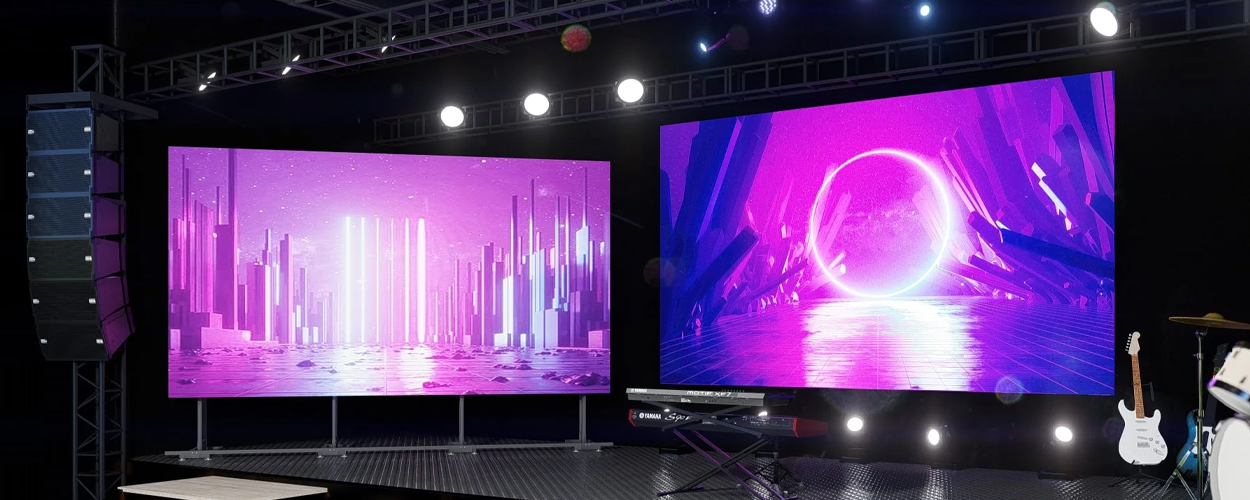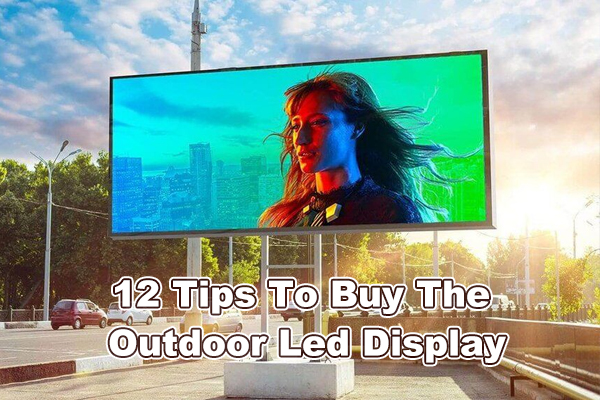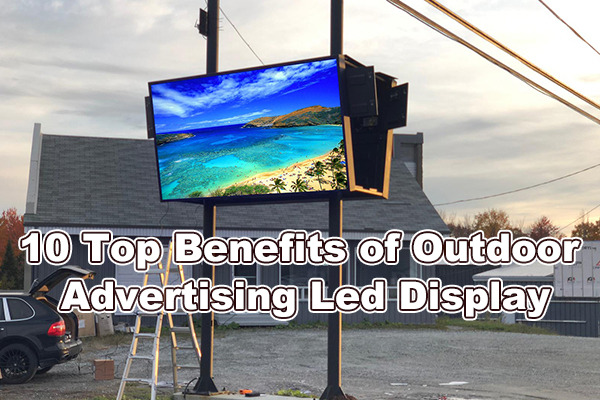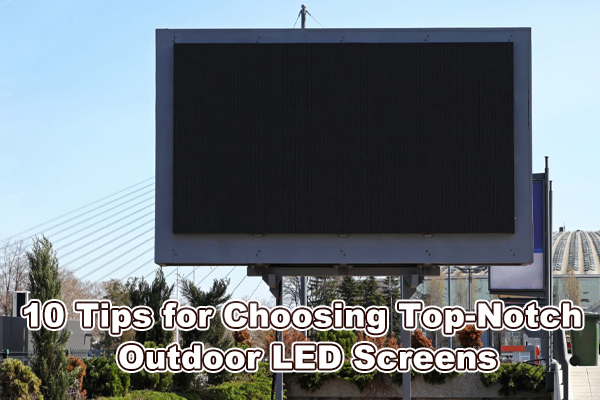Today, we’ll delve into the installation process for LED displays. As you’re likely aware, the installation of an LED display significantly impacts its final visual performance and operational efficiency. Mistakes made during installation can potentially lead to hidden issues down the road.
In this article, we’ll provide you with detailed guidance on a straightforward approach to installing your LED screen. I’m confident that by following these steps, you’ll be able to complete the installation quickly and precisely!
1. How do LED display panels work?
An LED panel is composed of thousands of closely arranged light-emitting diodes (LEDs) which collectively form an image on the display by varying the brightness of every individual diode. So, how do led displays work? Each LED emits light when an electric current is passed through it, and a driver circuit controls the individual LEDs to create images and video through patterns of light.
Why Should Organizations Consider An LED Video Wall?
In-Office Connectivity:
In the hustle and bustle of the office, every cubicle, command center, and common area is brimming with info that needs to reach employees, visitors, and customers for a top-notch experience. Enter LED video walls – the powerhouse for sharing impactful visual info. Thanks to their pixel-packed prowess, these bad boys can blend intel from diverse sources in a slew of formats. Picture airports flaunting flight schedules, ads, and emergency instructions – all on those video walls.
Corporate lobbies and breakrooms? They’re not left out. Daily announcements, performance highlights, live social media feeds, corporate ads, and warm guest welcomes – all rolled into one dazzling LED display. Even universities and corporations get in on the action, jazzing up collaboration rooms, classrooms, and conference rooms with video walls. Emergency centers? They leverage video walls to drop critical intel, helping operators nail quick and precise responses. Security and transport hubs? They crave IP camera access and slick interaction with video management systems. All handled with the right video walls and controllers.
User-Friendly Setup and Command:
Cutting-edge tech doesn’t have to be brain surgery. Video wall controllers swoop in to simplify the video wall setup, granting users full control over what’s on display, where, and how – no programming wizardry required. Video wall processors, available in all shapes and sizes, often come with software platforms for seamless content management across an entire organization’s video walls, or even multiple sites, all from a central hub. Teaming up with a content and design agency? Smart move to amp up that LED display’s visual swagger and maximize your investment.
Interactive Vibes:
In today’s tech playground, consumers demand smarts and interactivity from retailers, and employees want the same gig from their bosses. Enter video walls, doling out jaw-dropping graphics and a ticket to a new level of engagement. Touch, swipe, and interact with the screen to summon more graphics and info – it’s the future, and video walls are driving the ship.
Rock-Solid Reliability and First Impressions:
When’s the sequel to a first impression? Imagine clients stepping into your workspace and spotting a glitchy video wall or – gasp – the dreaded ‘blue screen of death.’ Beyond just a crummy first impression, that glitchy wall might stir up chaos in an emergency center or a high-stakes security spot. So, when you drop coin on an LED video wall, snag the right video wall processor to dodge the epic blue screen fail. For maximum ROI, a top-tier video wall processor is non-negotiable – reliability, security, usability, and performance on the line.
Multi-Source Visual Fiesta:
Big video walls aren’t just for show – they’re content chameleons. Want a mishmash of video streams from all angles and formats on your digital canvas? Grab a video wall processor that’s BFFs with interoperability, processing any content source format and spitting it out on any display type – LCD, LED, projector, you name it. Check that your video wall processor doesn’t play favorites with formats and can flaunt content on various display types.
Flex, Scale, Create:
Dropping a video wall means flexing creative muscle. Business owners flaunt a smorgasbord of content – promos, news, product launches, dashboards – all effortlessly managed and controlled. Bumping up the wall’s size? No screen or processor swap needed – just sprinkle in more LED units and upgrade the on-site video wall processor. Content creators? They’re the Picasso of the digital realm, concocting whatever, whenever. App-driven content? Configurable display sources? Slick layouts and graphics on demand? It’s all a button tap away!
Installing LED screen panels involves several steps, and the specific process may vary depending on the type of LED panels you have and their intended use (e.g., indoor or outdoor applications). Below is a general guide for installing LED screen panels:
How do you install LED screen panels?
1. Planning:
Determine the location and size of the LED screen.
Ensure that there is adequate support for the panels, considering the weight and size.
2. Electrical Preparation:
Install electrical outlets or power sources near the installation area.
Plan the power distribution and wiring layout.
3. Wall or Structure Preparation:
Ensure the wall or structure where the panels will be mounted is sturdy and can support the weight.
Install any necessary mounting brackets or frames according to the specifications provided by the LED panel manufacturer.
4. Panel Assembly:
Assemble the LED panels according to the manufacturer’s instructions.
Connect the panels using the provided cables.
Test the panels to ensure they are functioning correctly before installation.
5. Mounting:
Mount the LED panels onto the prepared wall or structure.
Ensure the panels are level and securely attached.
Use appropriate tools and hardware recommended by the manufacturer.
6. Wiring:
Connect the power cables to the LED panels.
Conceal wiring for a neat and professional appearance.
Follow electrical codes and safety guidelines.
7. Control System Setup:
Install any necessary control systems or media players as specified by the manufacturer.
Connect the control system to the LED panels.
8. Calibration and Testing:
Calibrate the LED panels to ensure proper color balance, brightness, and resolution.
Test the entire system to confirm that all components are working together seamlessly.
9. Maintenance and Troubleshooting:
Develop a maintenance plan for regular inspections and cleaning.
Familiarize yourself with troubleshooting procedures in case issues arise.
10. Compliance and Permits:
Check local regulations and obtain any necessary permits for the installation of LED screen panels.
It’s crucial to follow the specific guidelines provided by the LED panel manufacturer to ensure a successful installation and avoid voiding warranties. If you are unsure about any step, consult with a professional installer or seek assistance from the manufacturer’s support team.
Post time: Dec-05-2023











